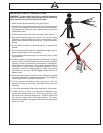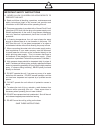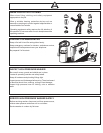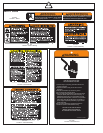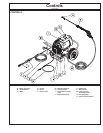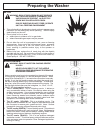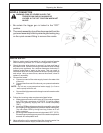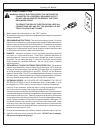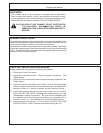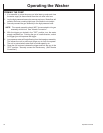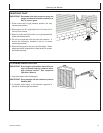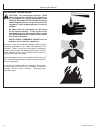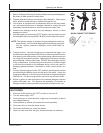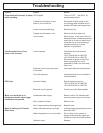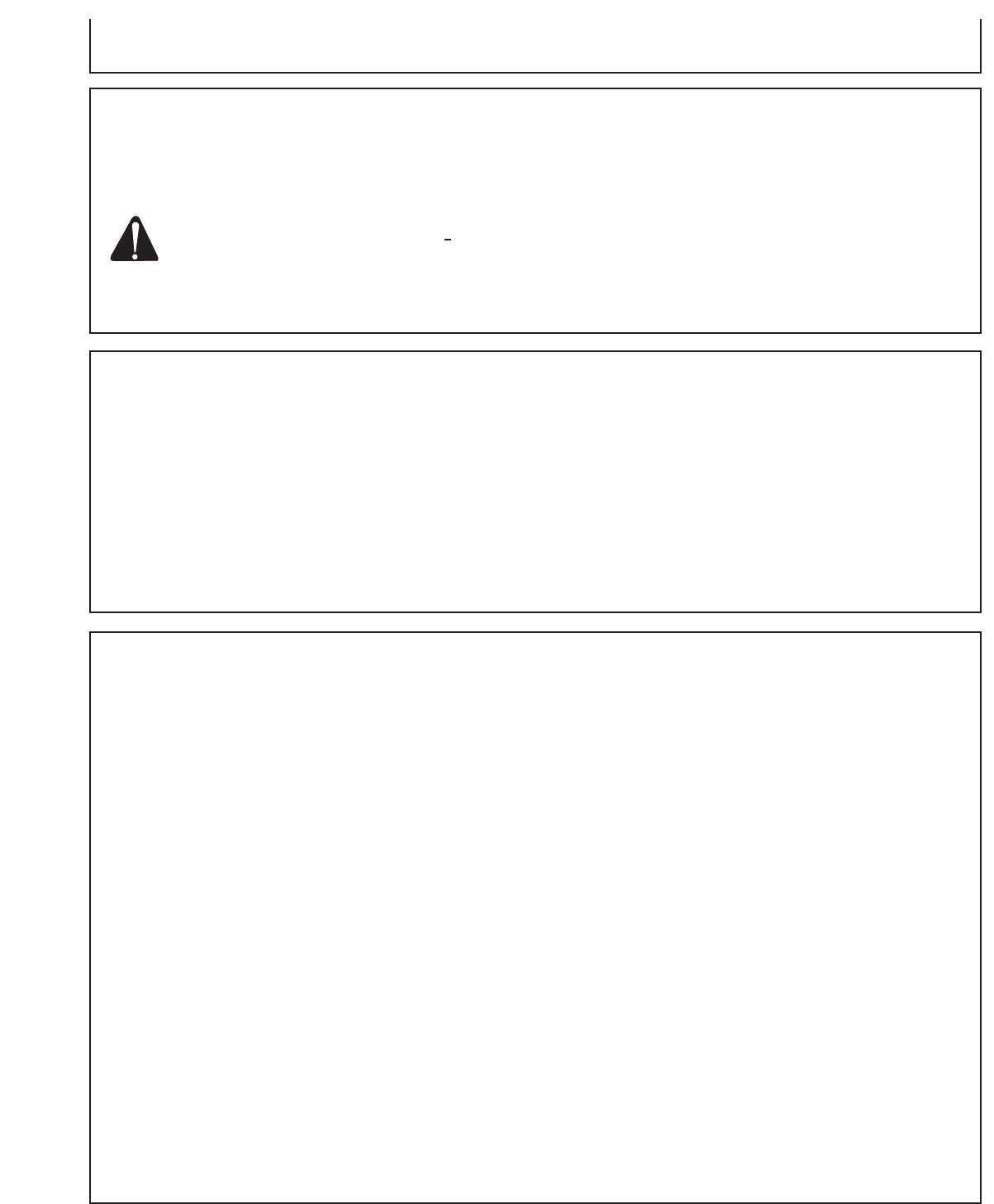
Preparing the Washer
Operator’s Manual 17
UNLOADER
The unloader valve on your machine is equipped with an adjustment
knob to adjust the pressure. Should less pressure be required, simply
turn the adjustment knob counterclockwise. To set back to maximum, turn
adjustment knob completely clockwise. DO NOT OVERTIGHTEN!
CAUTION
: RISK OF UNIT DAMAGE! DO NOT OVERTIGHTEN
THE UNLOADER. BREAKAGE WILL RESULT IN
IMMEDIATE LOSS OF WATER PRESSURE AND COSTLY
REPAIRS.
PRE-START INSPECTION PROCEDURES
Before starting the unit, perform the following procedures:
1. Check the oil level in the pump.
2. Inspect the inlet water strainer. Clean or replace if necessary. See
"Water Supply".
3. Check all hose connections to ensure they are securely tightened. See
"Water Supply".
4. Inspect for system water leaks and oil leaks. Be sure that all damaged
parts are replaced and that the mechanical problems are corrected prior to
operation of the unit. If service is needed, contact Customer Service.
5. Inspect high pressure hose for kinking, cuts or leaks. If a cut or leak is
found, DO NOT USE HOSE! Replace hose before starting unit. See
"Miscellaneous Safety Precautions". Be sure that all damaged parts
are replaced and that the mechanical problems are corrected prior to
operation of the unit. If you need service, contact Customer Service.
6. Inspect electrical cord for cuts. If a cut is found, DO NOT TOUCH OR
USE ELECTRICAL CORD! Replace cord before starting the unit.
THERMAL RELIEF VALVE
To ensure the bypass water temperature does not exceed acceptable levels,
never allow the pressure washer to operate in the bypass mode (with the unit
running and the trigger closed) for more than three minutes.
A thermal relief valve has been added to this unit to protect the pump. It may begin
to open and release water if the water temperature in the pump has exceeded
140° F. This will allow fresh, cool water to enter the system, therefore preventing
premature failure of pump packings.



